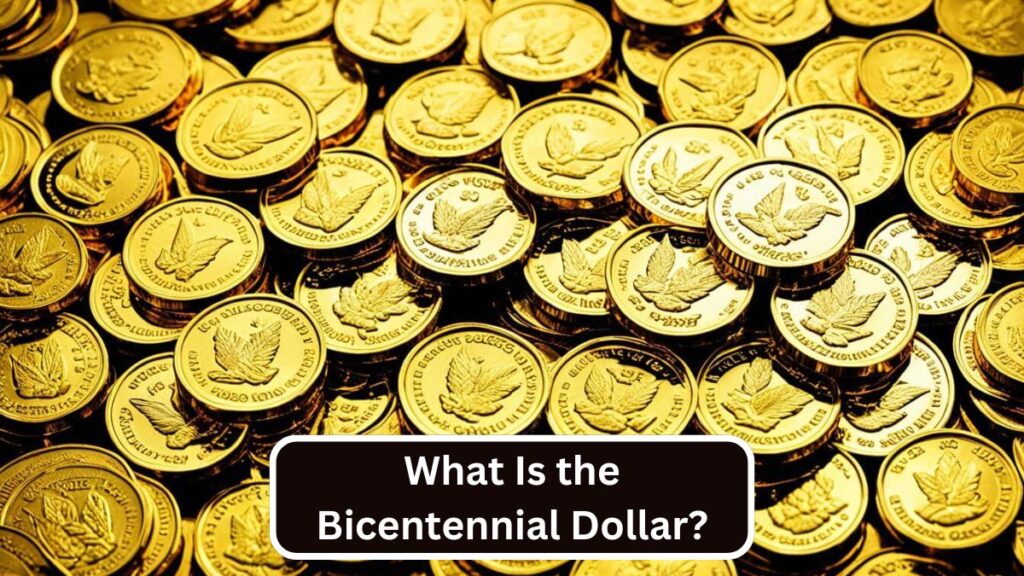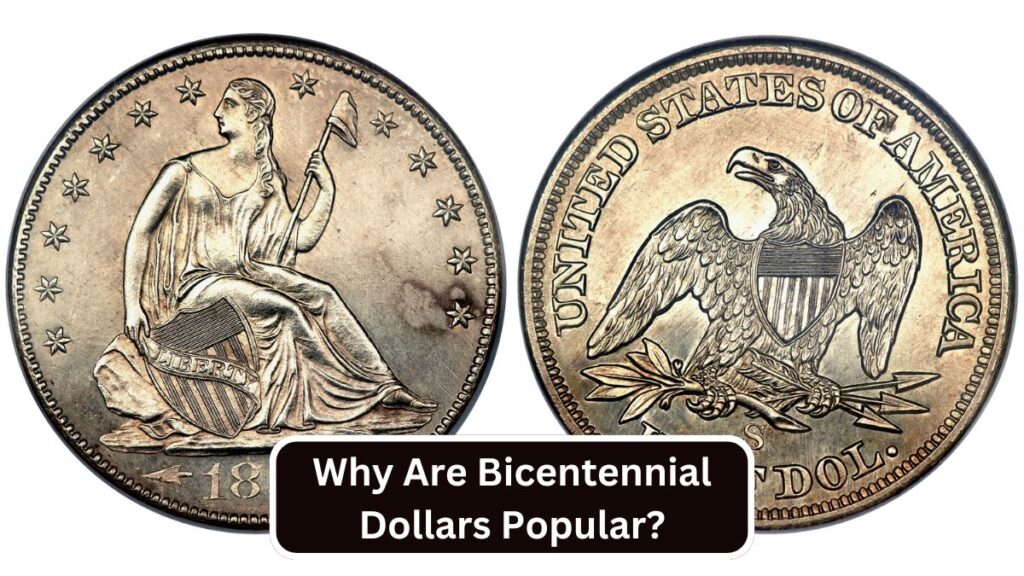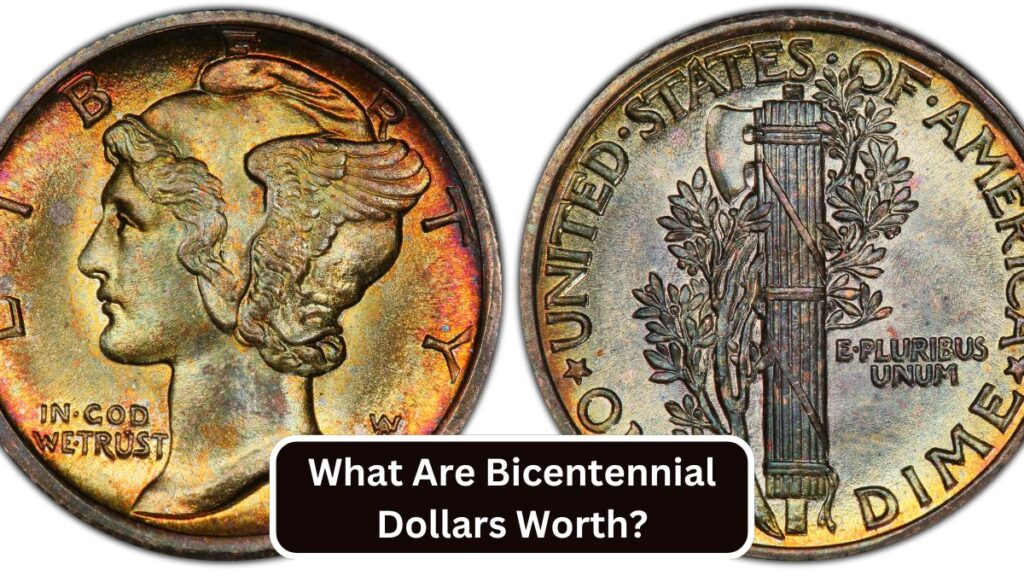When it comes to U.S. coins, the Bicentennial Dollar often grabs attention for its unique design and historical significance. However, there’s confusion about a 1980 Bicentennial Dollar. Spoiler alert: it doesn’t exist. Let’s explore the facts about the real Bicentennial Dollar and clear up this mix-up.
What Is the Bicentennial Dollar?

The Bicentennial Dollar was made to celebrate America’s 200th birthday in 1976. It’s a part of the U.S. Bicentennial coin series, which included quarters, half dollars, and dollars.
- Front (Obverse): Still features President Dwight D. Eisenhower’s profile.
- Back (Reverse): A unique design showing the Liberty Bell over the Moon, symbolizing freedom and progress.
- Mint Marks: Coins were minted in Philadelphia (no mark), Denver (D), and San Francisco (S).
These coins were produced in 1975 and 1976, and their design replaced the regular Eisenhower Dollar for those two years.
Is There a 1980 Bicentennial Dollar?
The simple answer is no. The Bicentennial Dollar was only minted during 1975 and 1976, and all coins were dated “1776-1976.” By 1980, the Eisenhower Dollar returned to its regular design featuring an eagle on the reverse.
Why Are Bicentennial Dollars Popular?

- Historical Significance:
These coins honor the 200th anniversary of the Declaration of Independence, making them an important piece of American history. - Unique Design:
The Liberty Bell and Moon design stands out among other dollar coins, attracting collectors. - Silver-Clad Versions:
Some Bicentennial Dollars were made with 40% silver and were included in collector sets. These are more valuable than regular copper-nickel coins.
| Category | Details |
|---|---|
| Coin Name | Bicentennial Dollar |
| Minting Years | 1975-1976 |
| Dates on Coin | “1776-1976” |
| Purpose | Celebrate the 200th anniversary of the Declaration of Independence |
| Obverse Design | Dwight D. Eisenhower’s profile |
| Reverse Design | Liberty Bell over the Moon |
| Mint Marks | Philadelphia (No Mint Mark), Denver (D), San Francisco (S) |
| Materials | – Copper-Nickel for circulation |
| – 40% Silver for collector sets | |
| Weight | – Copper-Nickel: 22.68 grams |
| – Silver-Clad: 24.59 grams | |
| Edge | Reeded (grooved edge) |
| Production Quantity | Hundreds of millions |
| Value (2024) | – Copper-Nickel: $1 unless uncirculated or proof ($3–$5) |
| – Silver-Clad: $10–$20+ depending on condition | |
| – Proof Coins: $15–$30+ in pristine condition | |
| Historical Significance | Commemorates the 200th anniversary of U.S. independence |
| Common Misconception | Belief in a 1980 Bicentennial Dollar (no such coin exists) |
| Collector Appeal | High for silver and proof versions |
| Best For | Beginner and history-focused coin collectors |
| Unique Features | Dual dates “1776-1976” and Liberty Bell over Moon design |
What Are Bicentennial Dollars Worth?

The value of a Bicentennial Dollar depends on its material and condition:
- Copper-Nickel Coins: Typically worth $1 unless uncirculated or proof, which may fetch $3–$5.
- Silver-Clad Coins: Can be worth $10–$20 or more, depending on condition.
- Proof Coins: Highly polished and detailed, these can range from $15–$30 or higher.
Should You Collect Bicentennial Dollars?
If you enjoy history or unique coin designs, the Bicentennial Dollar is a great addition to your collection. They are affordable and widely available, making them ideal for beginner collectors. While the 1980 version doesn’t exist, the 1976 Bicentennial Dollar remains a timeless piece of American history.
FAQs
Is there such a thing as a 1980 Bicentennial Dollar?
No, the U.S. Mint did not produce a Bicentennial Dollar in 1980. The Bicentennial Dollar was only minted in 1975 and 1976 and is dated “1776-1976.”
Why do people think a 1980 Bicentennial Dollar exists?
The confusion likely comes from mislabeling or misunderstandings about the production timeline of Bicentennial coins. Some collectors may mistakenly believe every Eisenhower Dollar has a Bicentennial version.
What is the Bicentennial Dollar?
The Bicentennial Dollar is a special edition Eisenhower Dollar minted to celebrate the 200th anniversary of the Declaration of Independence. It features the Liberty Bell and Moon design on the reverse.
What years were Bicentennial Dollars minted?
Bicentennial Dollars were minted in 1975 and 1976. All these coins bear the dual date “1776-1976” to honor the Bicentennial celebration.
What is the value of a Bicentennial Dollar today?
Copper-Nickel Coins: Typically worth $1 unless in uncirculated or proof condition, which may fetch $3–$5.
Silver-Clad Coins: Worth $10–$20 or more, depending on condition.
Proof Coins: Can range from $15–$30 or higher in pristine condition.
The Bicentennial Dollar is more than just a coin—it’s a symbol of America’s journey through 200 years of independence. While there’s no 1980 version, the 1976 Bicentennial Dollar continues to capture the hearts of collectors. Its unique design, historical value, and affordability make it a worthy piece for any collection.













